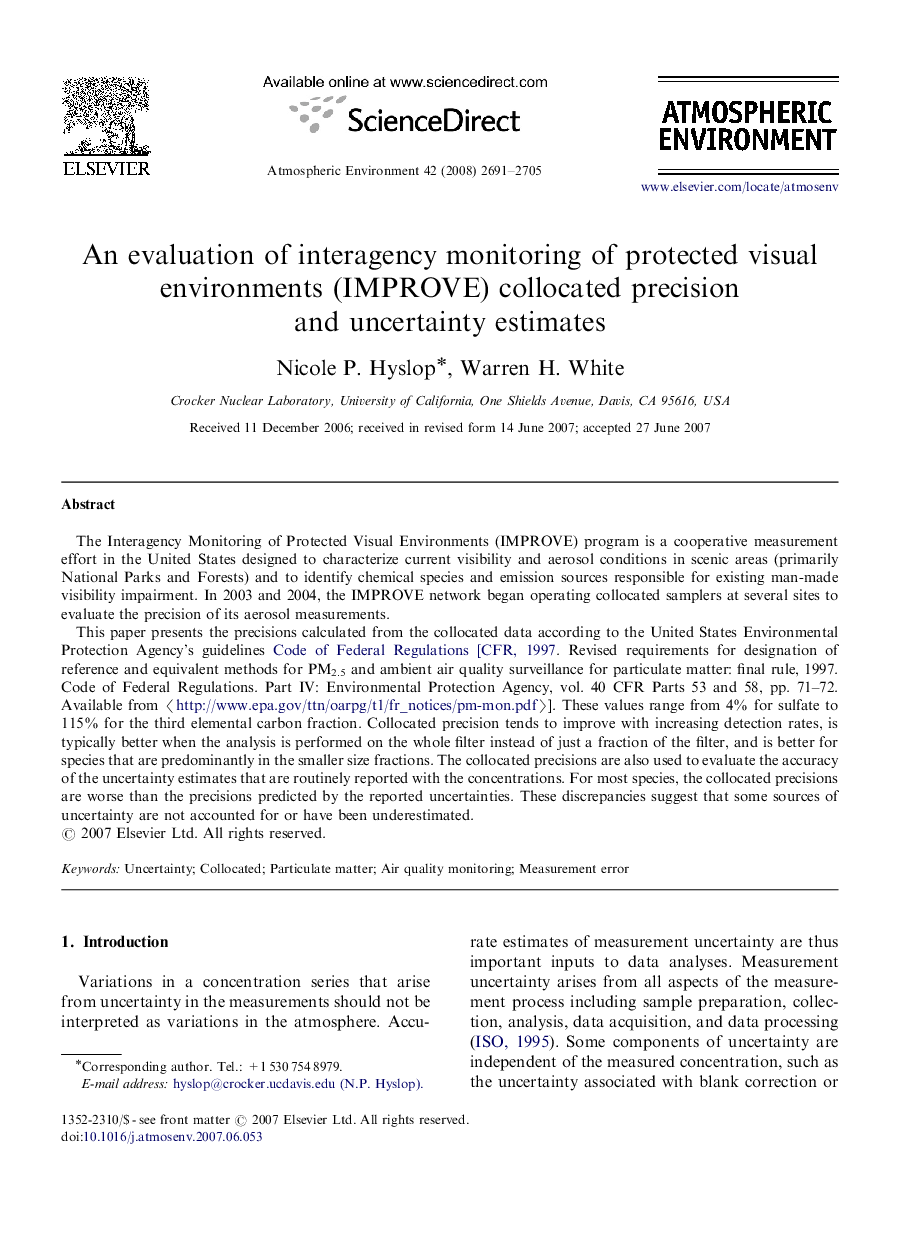| Article ID | Journal | Published Year | Pages | File Type |
|---|---|---|---|---|
| 4442838 | Atmospheric Environment | 2008 | 15 Pages |
The Interagency Monitoring of Protected Visual Environments (IMPROVE) program is a cooperative measurement effort in the United States designed to characterize current visibility and aerosol conditions in scenic areas (primarily National Parks and Forests) and to identify chemical species and emission sources responsible for existing man-made visibility impairment. In 2003 and 2004, the IMPROVE network began operating collocated samplers at several sites to evaluate the precision of its aerosol measurements.This paper presents the precisions calculated from the collocated data according to the United States Environmental Protection Agency's guidelines Code of Federal Regulations [CFR, 1997. Revised requirements for designation of reference and equivalent methods for PM2.5 and ambient air quality surveillance for particulate matter: final rule, 1997. Code of Federal Regulations. Part IV: Environmental Protection Agency, vol. 40 CFR Parts 53 and 58, pp. 71–72. Available from 〈http://www.epa.gov/ttn/oarpg/t1/fr_notices/pm-mon.pdf〉]. These values range from 4% for sulfate to 115% for the third elemental carbon fraction. Collocated precision tends to improve with increasing detection rates, is typically better when the analysis is performed on the whole filter instead of just a fraction of the filter, and is better for species that are predominantly in the smaller size fractions. The collocated precisions are also used to evaluate the accuracy of the uncertainty estimates that are routinely reported with the concentrations. For most species, the collocated precisions are worse than the precisions predicted by the reported uncertainties. These discrepancies suggest that some sources of uncertainty are not accounted for or have been underestimated.
